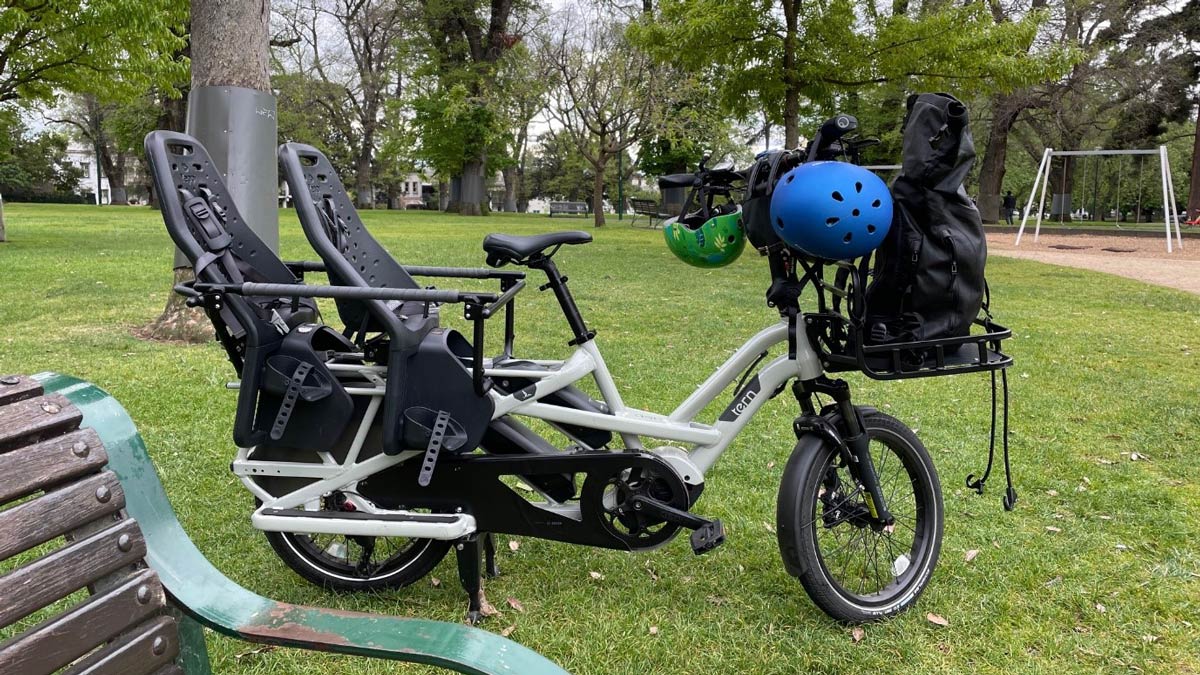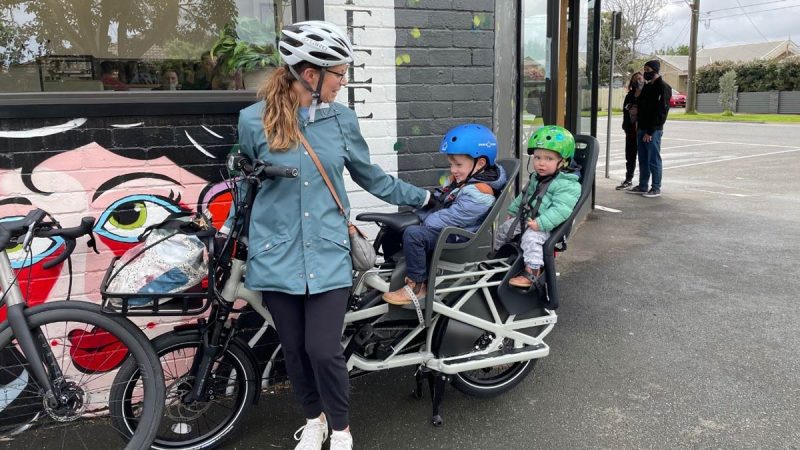In the depths of Melbourne’s 2021 COVID lockdown my family (Dougie, 18 months, Perry, 4, and Gina) started discussing the merits of buying an electric bike.
At the time, the motivation was upgrading from a single-seater kiddie trailer (a Croozer) to something that would fit both kids and allow us to have mini adventures within a radius of 5, 10 or 15 kilometres.
We considered buying a two-seat trailer but, even as a keen cyclist, dragging the weight of the 4-year-old up anything over a 4% gradient was already becoming a bit of a pain. We (or more accurately I) also had visions of going bike-packing as a family and thought that buying an e-gravel bike for my wife, plus a new trailer, would tick most boxes.
But after a bit more discussion we ruled it out as being more romantic/aspirational than practical. Then we got into a discussion about electric cars, our daily needs, what might happen when the kids get to an age where we have competing extra-curricular activities to deal with – and that’s when the Tern GSD (short for ‘get stuff done’) popped up.
We have a particular set of circumstances that I think lend themselves perfectly to the intended uses for the GSD. We live in a busy middle ring northern suburb of Melbourne, we generally only use our car (petrol) for short trips, the traffic around us sucks, parking is a nightmare, and we’re not ready to pull the trigger on an electric car.
While the GSD looks bulky, the wheelbase isn’t significantly longer than my road bike – making it easy to store in our single car garage.
The S10 model we purchased is the base model of what Tern describes as the “mini-van” of e-bikes, and came with one 400 Wh battery, which Tern says has a range of between 42-85km, and a spare slot for an extra battery.
We bought an additional 500 Wh battery and now the range is much, much greater than the kids would be comfortable riding (but it’s opened the door to dumping the kids on the grandparents while mum and dad go on a bike-packing adventure… so we’ve ticked our other box too). Having two batteries means we can get away with charging it once a week or fortnight.
It’s a pedal-assist bike, with the assistance limited to 25km in Australia. So, you do have to do a little bit of work, but with four different modes of assistance you can get away with doing very little if that’s your preference.
It has a lockable front suspension fork with 70mm of travel, most elements of a 10-speed Shimano Deore groupset, a highly adjustable cockpit, and runs on a Bosch Cargo Line system and head unit. And there are a tonne of accessories to choose from – a storm shelter for the kids, massive panniers, racks, etc.
I’ll let the bike nerds go and look up the specs themselves and focus on why the bike has been a revelation for our family.
IT. IS. A. DELIGHT. TO. RIDE.

Every time we take off in the morning to drop the kids at daycare they squeal with excitement as the ‘turbo’ mode delivers a big whack of torque to get us going.
It’s exceptionally easy to adjust the seat height and cockpit settings (which we just tend to leave in one place) to suit us both. The low centre of weight and smaller wheels make the bike feel very stable, even with the kids fidgeting and winding each other up on the back.
I can also understand why the Bosch motors are so popular in e-bikes, they really have got it right in terms of the seamless assistance they offer the rider…up to a point.
The only time the bike has struggled is loaded with both kids and luggage going up ascents of over about 10-12%. In those cases, pulling up at the lights on a hill and then pushing off has been a bit hairy.
The really interesting thing about owning the bike, even though it should have been screamingly obvious beforehand, is how sub-optimal taking a car now seems in so many different scenarios.
Going to the Melbourne Zoo, which is on a bike path? We can pull up five metres from the entrance.
Taking the kids to daycare? We shoot past the queue of traffic in the bike lane.
Heading down to the Preston Market, which on the weekends is besieged by cars? Bang. Straight in and off the bike.
Just about any local errand that I need to run is now done on the bike. It can also take a gross load of 200kg. Short of carting panniers full of lead ingots around, that’s plenty.
Last winter we used the GSD a fair bit, because, even in Melbourne it rarely rains all day – there’s usually a break between showers to get out for a quick adventure.

As I pootle along in the morning with the kids on the back I often think about that meme: “You’re not stuck in traffic, you are traffic.”
While we certainly still rely on our petrol station wagon for about half of our daily trips/driving – the GSD has given us a fun, capable and comfortable way to stop being traffic.
Julian Polachek is senior manager, external communications, for Alinta Energy.

